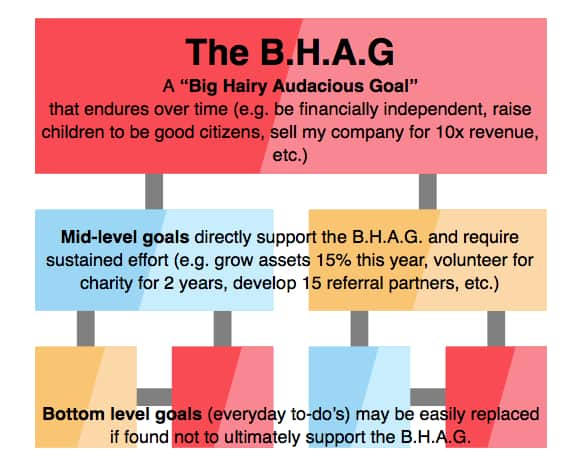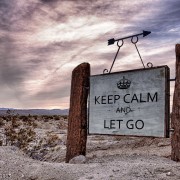Which is Celebrated More at Your Organization–Talent or Tenacity?
How do you know when it is time to throw in the towel on your latest project? The answer will vary from one individual to another, and perhaps it is dependent on the current environmental circumstances, too. I have to say…January in the Midwest is an easy time to be a quitter despite all the best new year resolution intentions. So many things are stacked against you…the cold, the ice, the deprivation of consistent sunlight and the post-holiday withdrawal. So what keeps some of us going despite the odds?
Well, a tolerance for bearing subzero temperatures and a lifetime of Indiana winters is probably a decent start. But when it comes to losing weight, getting that degree, earning a promotion or achieving that lofty departmental goal, what matters more: talent or tenaciousness?
I think most reasonable people would say “a little of both.” However, Angela Duckworth makes the argument that “grit” counts for more than most people tend to believe in her book Grit: The Power of Passion and Perseverance. She comments that most people would say that being a hard worker is more important than being a “natural.” Surprisingly, though, research studies suggest the subconscious proves the opposite. For example, this study in the Journal of Experimental Social Psychology has shown that individuals presented with two different musicians’ profiles (one celebrating talent-based achievement and the other citing effort-based achievement) tend to pick the talent-based “natural” as the more successful musician upon hearing a musical selection–even though the two different selections are actually played by the same musician.
In this blog, I’ll share how concepts from Duckworth’s book can be applied to fostering grit and tenacity in your life and in your organization. First, let’s understand the relationship between talent, effort and achievement.
Why do we overemphasize talent?
One might argue that having a bias toward talent is a form of self-preservation. Would you rather beat yourself up for not having the swimming skills of Michael Phelps; or, would it be easier to chalk up your lack of pool prowess to the fact that Phelps was born to swim and isn’t even in the same category as you?
When we compare ourselves to genius…or even to a perceived “natural”…then we don’t have to feel bad about falling short because our relative disadvantage is out of our control. It then becomes easy to discount the long hours of practice that an expert has expended on his skill to achieve greatness.
Talent alone is not a means to greatness
But still, talent can’t be ignored, right? I mean, Michael Phelps does have a seven foot arm span which hasn’t hurt his gold medal prospects. There is in fact a place for talent. But what is worth more…talent or effort? And, what combination equals achievement?
In her book, Duckworth proposes that “with effort, talent becomes skill and, at the very same time, effort makes skill productive.” And so you must start with a little bit of talent…but natural talent left unpracticed will fall short of skill honed through effort over time. In fact, she argues that effort counts twice:
Talent x Effort = Skill
Skill x Effort = Achievement
So, you might conclude that the more effort applied, the more your skill improves and the more you are capable of achieving even if you start with very little talent. Can you think of an example from your own life where this equation rang true?
I can. I played varsity basketball in high school and managed to be a starting forward my senior year, but my position was tenuous at times. I was decent, but less accomplished than the other starters. The one thing that over time distinguished me from the others was my ability to shoot with my weak hand on the left side of the basket. All the other players would generally practice with only their dominant right hand, but I started to see a knack for shooting–if only reasonably awkwardly–with my weak left hand when under the basket on the left side.
Seeing a spark of talent for doing so and with the encouragement of my coaches, I continued practicing with my off hand everyday until it felt like a natural move during the game. My flexibility to play both sides of the lane made me a valuable player in the starting spot and I even favored the left side because it gave me a competitive edge–particularly when I was fouled with an “and 1” opportunity rather than stuffed after shooting into a defender’s arms with my right hand on the left side.
Talent is a starting point for skill, but consistency of effort is what matters in the end. And while it might be fairly easy to examine this with the lens of your own life, it is applicable from an organizational standpoint, too. So, do the tenacious have a place at your organization?
Four elements of grit for your workforce
“A combination of passion and perseverance makes high achievers special.
High achievers have grit.” – from Grit: The Power of Passion and Perseverance
Duckworth identified four elements of grit in her book: interest, practice, purpose and hope. While the context of these was mostly focused on curating grit in individuals in her book, employers can use these same components to inspire conditions for creating gritty workforces.
- Interest. Passion doesn’t exist unless employees enjoy what they do most of the time. While intrinsic motivation may not happen on day one, creating an environment in which employees have the opportunity to consistently develop their interests over time is a step in the right direction.
- Encourage employees to belong to special interest groups.
- Encourage cross-training between departments.
- The capacity to practice. For grit to exist, there must be a drive toward skills mastery–the perseverance to continuously improve. Does your organization make it easy enough for employees to do deliberate practice of their skills–free from distraction?
- Ensure that employees have access to quiet places to work without interruption.
- Encourage supervisors and direct reports to work together to set stretch goals. When those are achieved, set new ones.
- Champion a culture of timely feedback so that employees understand what adjustments to make to master their skills.
- Train leaders and mentors to be effective coaches for employees as they practice their skills.
- Purpose. Knowing that your work matters is powerful external motivation that can persist even longer than passion alone. Savvy employers successfully connect the work of individual employees to the energizing purpose of the overall organization. When an employee finds her purpose, it can be the difference between just a job and her life’s pursuit.
- Challenge employees to evolve their job responsibilities to meet emerging organizational needs and satisfy their own developing interests.
- Ask employees to seek out professional mentors that can help them connect a strong sense of purpose to their interests.
- Hope. Hope is stick-to-itiveness–the ability to keep going when it’s tough, and be resilient enough to have a growth mindset. Does your organization empower employees to believe they have control over their own outcomes?
- Foster optimism rather than helplessness when breaking tough news with business explanations that are temporary and specific, rather than permanent and broad, according to Duckworth’s book.
- Train mentors and managers to be encouraging and open-minded rather than rehearsed and standardized in their approaches.
What are you doing to foster grit in your workforce?
The good news is that grit can grow. I think of it like a contagious muscle…if you surround yourselves with other gritty people it catches, and the more you exercise it the grittier you can become. Of course the opposite is true, too, so don’t fall into grit lethargy!
Start identifying activities that are gritty
With the necessity of being interested, having the ability to practice, finding purpose and having hope…it can be daunting to know which activities will catapult your employees to be, as Duckworth calls them, “paragons of grit.” She recommends starting with the “hard thing rule.”
The “Hard Thing Rule.”
Do something that is both interesting and hard…and do it for more than a year.
As I was reading this I thought, finally–justification for me running my two kids around to multiple activities such as scouts, soccer, basketball, and choir year after year! My own comment when defending my actions to others was that I want my kids to be used to being committed to and involved with something that teaches them something new….so that as they become teenagers they are used to being busy and don’t fall into the jaws of poor life decisions.
But the key to success is to let your kids…or your employees…chose their own interests/activities. To become truly gritty, however, studies referenced in the book suggest that involvement in a specific extracurricular activity must last two years. So, perhaps consider two year terms for your employer’s committees. Endurance and stamina for a task apparently count more than intensity in this context.
Create goal frameworks
What if your employees have lots of interests and goals? It might be hard for them to decide what to quit and what to focus on? Duckworth recommends prioritizing goals within a pyramid-like framework or ladder. The top level goal is an end in itself that remains unchanged for extended periods of time; whereas, the bottom level goals are minor tasks that are done to support the middle level and top level goals. The bottom level goals may be frequently replaced in the pursuit of other goals that might better support the top of the pyramid.
So then, one might say that a gritty organization is one with a sound and well-communicated goal framework. The primary organizational goal is a big, hairy audacious one that takes some time to achieve, but that gives meaning to all initiatives below it. Less gritty organizations don’t have clearly defined hierarchical goals; or, they have a bunch of mid-level goals that compete with one another more than support a primary initiative.
Does your senior management team have passion and perseverance for big goals, as well as the capacity to lead supportive goal setting efforts throughout the organization?
Champion a gritty culture
When you hang around groups with strong social norms, then you either adopt many of the same behaviors for yourself over time or you eventually leave the group. If you want gritty employees, you need to have a gritty culture that challenges people to pursue interests, practice them over time and persevere despite setbacks.
Is there a clear breakpoint in employee tenure at which turnover significantly drops at your organization? If so, it’s probably the point at which newer employees feel as though they’ve assimilated fully into your culture–the point at which they’ve adopted your norms as their own and they identify and embrace them…even champion them moving forward.
- What are you doing, then, to assimilate people into your culture more quickly?
- Are you training managers and mentors to be beacons of grit?
- Are you living your core values everyday?
Tenacity catalyzes talent
In conclusion, it is clear that you can’t forget the role talent plays in achievement. However, talent is amplified when continuous effort is applied to hone skill and lead to achievement. If you want gritty employees who have the capacity to put in the effort, then you might hire tenacious people who have demonstrated past performance of sustained effort on extracurricular interests. This can be unearthed in the interview process.
Additionally, examine your culture and workplace practices to see where you might apply the four components of grit to foster greater achievement within your organization.











